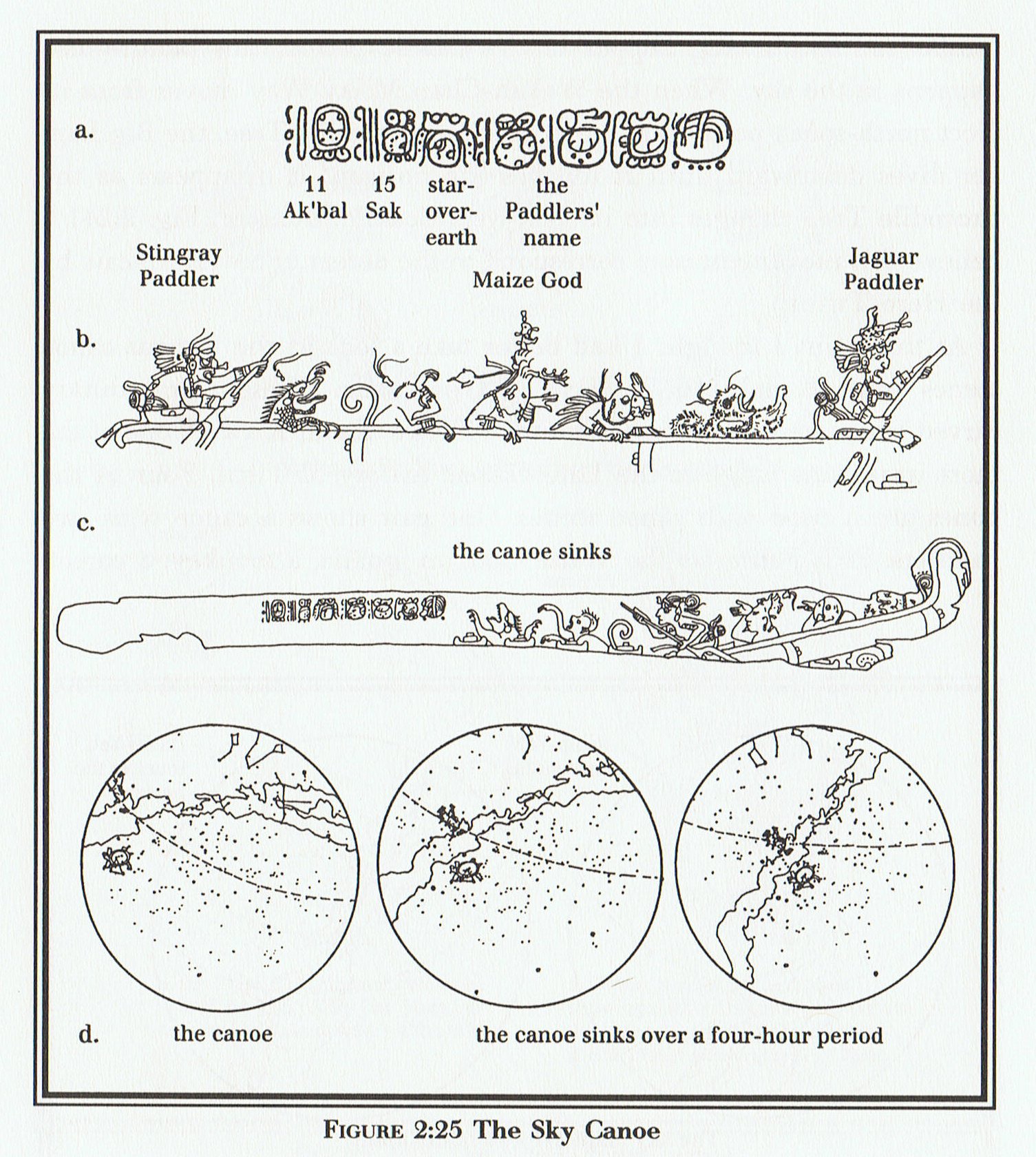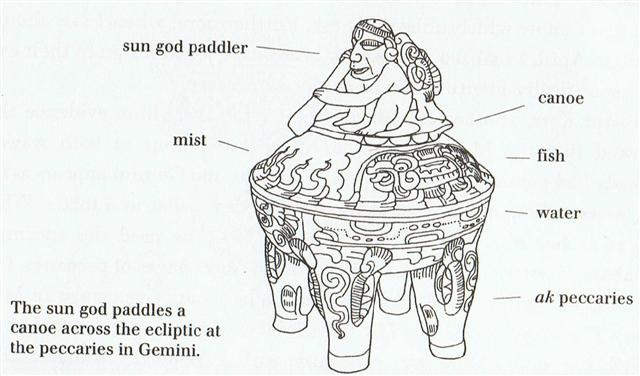Sagittarius is on the same side of the Milky Way as Gemini, with both constellations arriving just after the river. Time runs from left to right in the drawings of Hevelius. When Gemini rose with the Sun in July (the month beyond the solstice) Sagittarius could be observed close to the Full Moon. When Sagittarius was rising heliacally in January (the month beyond the other solstice) the Gemini twins were visible close to the Full Moon. In rongorongo times the solstice months (incorporating 6h respectively 18h) could be said to coincide with the Milky Way. The once (in Krita Yuga) level water surface (aqueduct) between 12h and 0h, between Sagittarius respectively Gemini, was no longer present, because the 'heavenly Ganga' had been brought down by Canopus, drinking up all its waters. Instead our galaxy was now standing up like a flowering great tree rising up from Gemini towards Sagittarius. According to the ancient sky map the region regarded as 'the Sea' came after Sagittarius and probably because a horse dwells on land and not in the sea the figure of Hevelius is reversed, facing backwards in time. Here there should not be any future for a horse, nothing to look forward to. ... This [σ Sagittarii] has been identified with Nunki of the Euphratean Tablet of the Thirty Stars, the Star of the Proclamation of the Sea, this Sea being the quarter occupied by Aquarius, Capricornus, Delphinus, Pisces, and Pisces Australis. It is the same space in the sky that Aratos designated as Water ... The pictures below are Mayan and the Milky Way 'canoe' is therefore turning down to the left instead of down to the right:
... In the Popol Vuh, First Father was killed in Xibalba, the Maya Otherworld, by the Lords of Death. They then buried his body in a ballcourt. His twin sons went to Xibalba, defeated his killers, and brought him back to life. Classic-period artists depicted First Father being reborn through the cracked carapace of a turtle shell, often flanked by his two sons ... ... As I looked at the computer screen, everything clicked. Gemini had to be the copulating peccaries and Orion the turtle. The three stars on its back in the cartouche at Bonampak' were placed in the exact position of Orion's belt.
But more important, the Maize God [First Father] was reborn from the cracked carapace of a turtle, and we had a text that said that the first image of the turtle was seen at the Creation. The two anthropomorphic figures between the peccaries and the turtle had to be the personifications of Saturn and Mars. And we already knew many examples of other planets, such as Venus and Jupiter, that were represented by anthropomorphic figures. We seemed to have two more here. Not until much later did it hit me that August 6, the date of the zenith passage at Bonampak', was only seven days before the Creation day of August 13. Matt Looper provided the confirmation by calling my attention to a picture from the Madrid Codex, another of the four Maya books. It shows a turtle with a triangle of stones on its back. The turtle in the codex is shown suspended from cords tying it to the skyband because Orion hangs below the ecliptic. Clearly Orion was the turtle from which the Maize God rose in his resurrection. The Milky Way above the turtle had to be the Maize God appearing in his tree form as he does on the Tablet of the Foliated Cross at Palenque. The image of the first turtle really is in the sky.
The identification of Gemini as copulating peccaries made sense in another curious way. For years we have seen pots that have these odd modeled peccary heads as their feet. All of these pots have the sea painted or drawn on their bottoms and an extraordinary one in the Dallas Museum of Arts shows the sun god paddling a canoe across this sea.
I realized that this must be the sun riding the ecliptic across the Peccaries of Gemini. (David Freidel, Linda Schele, Joy Parker: Maya Cosmos. Three Thousand Years on the Shaman's Path.) |





